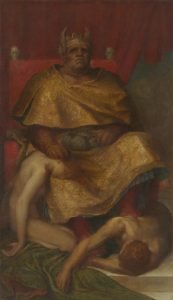Exploring Little Fires Everywhere
In the recent TV adaptation of Celeste Ng’s bestselling novel, “Little Fires Everywhere,” we witness the intricate and often tumultuous relationships between mothers and daughters. This compelling drama takes us on a journey that explores the complexities of motherhood and identity, as we see characters struggle with their past, present, and future. Through the lens of race, class, and privilege, “Little Fires Everywhere” offers an insightful look into the challenges of raising children and finding one’s place in the world. In this article, we’ll delve deeper into the themes of motherhood and identity in “Little Fires Everywhere” and examine how they shape the show’s characters and plot.
In the recent TV adaptation of Celeste Ng’s bestselling novel, “Little Fires Everywhere,” we witness the intricate and often tumultuous relationships between mothers and daughters. This compelling drama takes us on a journey that explores the complexities of motherhood and identity, as we see characters struggle with their past, present, and future. Through the lens of race, class, and privilege, “Little Fires Everywhere” offers an insightful look into the challenges of raising children and finding one’s place in the world. In this article, we’ll delve deeper into the themes of motherhood and identity in “Little Fires Everywhere” and examine how they shape the show’s characters and plot.

Introduction to the concept of motherhood and identity in the novel
As we delve into the captivating world of “Little Fires Everywhere,” one of the most prominent themes that we encounter is that of motherhood and identity. In this novel, Celeste Ng masterfully explores the complexities of motherhood and how it shapes the identity of the women in the story. Whether it’s the struggles of young motherhood or the challenges of adoption, Ng delicately weaves together the experiences of different characters to create a poignant and thought-provoking narrative. Ultimately, “Little Fires Everywhere” is a masterful exploration of motherhood and how it shapes our sense of self, making it a must-read for anyone interested in this fascinating topic.
Overview of the character of Mia and how motherhood and identity intersect in her story
Mia Warren, portrayed by Kerry Washington, is a complex and multifaceted character in the TV series adaptation of “Little Fires Everywhere”. Her identity as an artist and a mother often intersect and clash, leading to conflicts and challenges in her personal and professional life. As a single mother, Mia struggles to balance her desire to pursue her passion for photography with the responsibilities of raising her daughter Pearl. Her past experiences and secrets also play a crucial role in shaping her identity and decisions. Through Mia’s character, the show explores the themes of sacrifice, ambition, and the complexities of motherhood and identity.
Analysis of Mrs Richardson’s identity as a mother and how it contrasts with Mia’s
In the hit series “Little Fires Everywhere,” the two main characters, Mrs. Richardson and Mia, portray different aspects of motherhood and identity. Mrs. Richardson is seen as a picture-perfect mother who has everything under control, while Mia is more of a free-spirited artist who struggles with her identity as a mother. Mrs. Richardson‘s identity is built around her family, and she goes to great lengths to protect them, even if it means crossing boundaries. On the other hand, Mia‘s identity is centered around her art, and she struggles to balance her passion with her responsibilities as a mother. Their contrasting perspectives on motherhood and identity offer valuable insights into the complexities of modern parenting, making “Little Fires Everywhere” a must-watch for anyone interested in exploring these themes.

Discussion of the theme of motherhood as a choice versus a societal expectation
In the hit television series “Little Fires Everywhere,” the theme of motherhood as a choice versus a societal expectation is explored through the lives of two very different women. While Mia Warren chooses to prioritize her career as an artist and maintain her independence, Elena Richardson fully embraces her role as a mother of four and strives to uphold the image of the perfect suburban mom. Through their interactions and personal journeys, the show delves into the societal pressures placed on women to conform to traditional roles and challenges the notion that motherhood is the only path to fulfillment for women. The exploration of this theme adds depth and complexity to the characters and highlights the ongoing conversation around women’s choices and autonomy.
Examination of the impact of motherhood on the characters’ personal and professional lives
In the hit TV series “Little Fires Everywhere,” motherhood takes center stage as the lives of various characters are impacted by the experience. The show explores the complex relationship between motherhood and personal and professional identity, with characters such as Mia and Elena struggling to balance their roles as mothers with their careers and personal aspirations. The examination of this theme provides a glimpse into the challenges that mothers face in navigating their personal and professional lives, while also shedding light on the impact that motherhood can have on a woman’s sense of identity. Through its exploration of these themes, “Little Fires Everywhere” offers a nuanced and thought-provoking look at the experiences of mothers in contemporary society.
Exploration of the role of race and class in shaping the characters’ experiences of motherhood and identity
In the highly acclaimed TV series “Little Fires Everywhere,” the exploration of the role of race and class is crucial in shaping the characters’ experiences of motherhood and identity. The story revolves around two mothers, one white and wealthy, the other black and struggling to make ends meet, who become intertwined in each other’s lives. The show delves into the complexities of motherhood, identity, and the intersections of race and class. Through well-crafted characters and nuanced storylines, “Little Fires Everywhere” illuminates the importance of acknowledging the impact of these factors in shaping our experiences and understanding of the world around us.

Analysis of the impact of secrets and lies on the characters’ sense of self as mothers
In “Little Fires Everywhere,” the themes of secrets and lies run deep, and their impact on the characters’ sense of self as mothers is significant. As the plot unfolds, we see the main characters grappling with the choices they have made in order to protect themselves and their families. These choices often come at a cost, as they force the characters to confront their own values and beliefs about motherhood and identity. For some, the secrets they keep threaten to unravel everything they hold dear, while for others, the lies they tell themselves and others provide a sense of safety and control. Ultimately, the exploration of these themes in “Little Fires Everywhere” offers a nuanced and thought-provoking look at the complexities of motherhood and identity.
Discussion of the ways in which motherhood and identity are intertwined for the teenage characters in the novel
In the novel Little Fires Everywhere, motherhood and identity are deeply intertwined for the teenage characters. Mia, a single mother who is an artist, struggles to balance her identity as an artist and her role as a mother to her teenage daughter, Pearl. On the other hand, Elena, a wealthy mother of four, is consumed by her identity as a perfect mother, which leads to her control over her daughter, Izzy. Through the relationships between the mothers and their daughters in the novel, author Celeste Ng explores the complexities of motherhood and the impact it has on identity formation for both the mothers and their children. The novel serves as a thought-provoking commentary on the societal pressures and expectations placed on mothers, particularly teenage mothers, and the impact it has on their sense of self.
Examination of the theme of nature versus nurture in shaping the characters’ identities as mothers
In the hit 2020 miniseries “Little Fires Everywhere,” the theme of nature versus nurture plays a significant role in shaping the identities of the show’s mothers. Mia Warren and Elena Richardson, two very different women with very different backgrounds, are both mothers trying to raise their children in their own way. Mia, an artist and a free spirit, believes in letting her daughter grow and explore on her own. Elena, a successful journalist and perfectionist, believes in shaping her children into the perfect image of what society expects them to be. As the show progresses, we see how their different approaches to motherhood ultimately shape the identities of their children, and how the age-old debate of nature versus nurture applies to the maternal role.
Conclusion reflecting on the significance of the novel’s exploration of motherhood and identity for contemporary society
In conclusion, “Little Fires Everywhere” is a powerful exploration of motherhood and identity in contemporary society. The novel highlights the struggles of women to find their own paths while balancing their roles as mothers, daughters, and wives. The characters’ journey demonstrates how societal expectations can often hinder women from realizing their full potential. This novel is a reflection of the struggles of many women in modern society and brings to light the importance of individuality and self-acceptance. It reminds us that every woman deserves the freedom to make her own choices in life, and we must continue to work towards a world where all women are empowered to do so.
For more information about Motherhood and Identity in Little Fires Everywhere, including movie details, cast information, etc..
check out the filmaffinity page.



